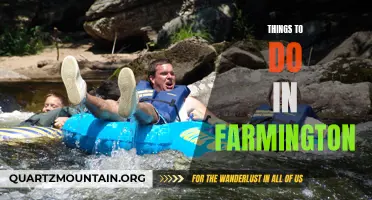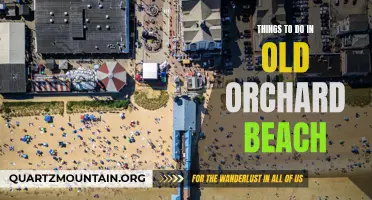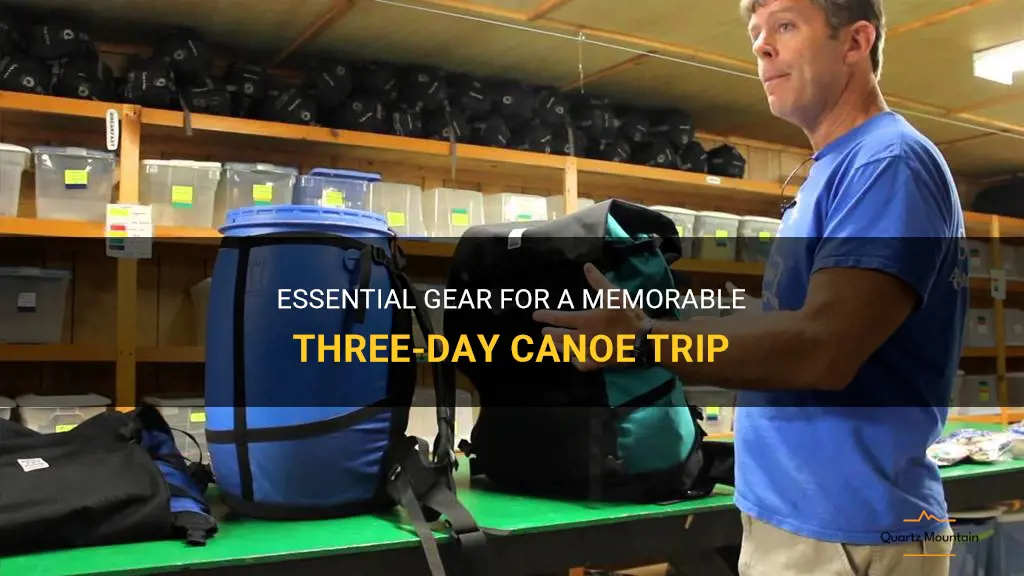
Imagine the thrill of gliding through serene waters, surrounded by towering trees and the tranquil sounds of nature. A three-day canoe trip is an adventure like no other, allowing you to disconnect from the chaos of the modern world and immerse yourself in the beauty of the great outdoors. To make the most of this unforgettable experience, having the essential gear is crucial. From sturdy paddles to reliable camping equipment, this guide will ensure your three-day canoe trip is both safe and memorable. So grab your gear, pack your spirit of adventure, and get ready to embark on a journey that will leave lasting memories and a deep appreciation for the wonders of nature.
What You'll Learn
- What are the essential items to pack for a three day canoe trip?
- How much food and water should I pack for a three day canoe trip?
- What type of clothing and gear is necessary for a three day canoe trip?
- Are there any special safety equipment or tools that should be packed for a three day canoe trip?
- Are there any additional recreational items or entertainment options that are recommended to pack for a three day canoe trip?

What are the essential items to pack for a three day canoe trip?
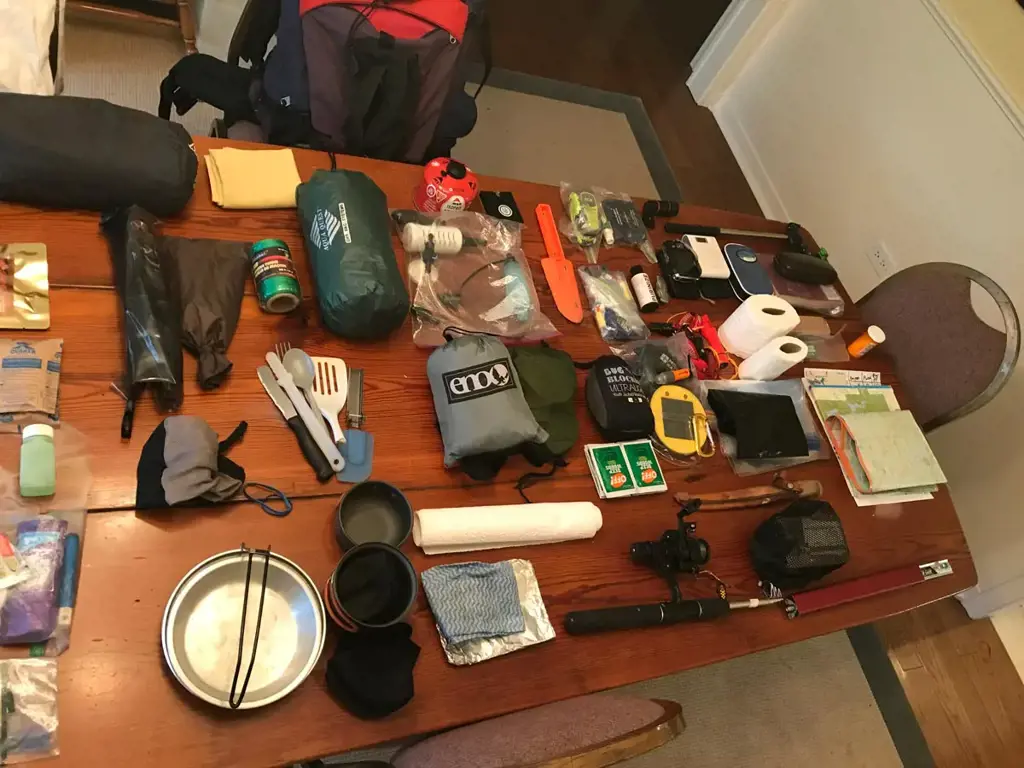
When planning a three-day canoe trip, it's important to pack the essential items to ensure a comfortable and safe journey. Whether you're an experienced paddler or a beginner, having the right gear can make all the difference. In this article, we will explore the key items that should be included in your packing list for a three-day canoe trip.
Canoe and Paddles:
The first and most obvious item you will need is a canoe. Choose a canoe that is suitable for your skill level and the type of water you will be paddling on. Additionally, make sure to pack durable and lightweight paddles that are comfortable to use for long periods.
Life Jackets:
Safety should always be a top priority. It is crucial to pack properly fitting life jackets for each person on the trip. Ensure that the life jackets are US Coast Guard-approved and in good condition.
Navigation Tools:
Bringing along navigation tools such as a compass, map, and/or GPS device is essential to stay on track during your trip. These tools will help you navigate through unfamiliar territory and avoid getting lost.
Shelter:
Having a reliable shelter is vital, especially if you plan on camping overnight. A lightweight tent or tarp can provide protection from the elements. Make sure to choose a tent that is suitable for the weather conditions you expect to encounter.
Sleeping Gear:
A comfortable night's sleep is essential for a successful canoe trip. Pack sleeping pads or air mattresses to insulate you from the cold ground and ensure a good night's rest. Additionally, bring warm sleeping bags or blankets, depending on the weather forecast.
Clothing and Footwear:
Choosing appropriate clothing and footwear is crucial for staying comfortable during your trip. Pack lightweight, quick-drying clothing suitable for the weather conditions you will face. Bring extra layers to accommodate changing temperatures, and don't forget a rain jacket and waterproof pants to stay dry in case of rain or splashing waves. Additionally, bring sturdy, waterproof footwear that can handle wet conditions.
Food and Water:
A three-day canoe trip requires careful planning for meals and hydration. Pack lightweight, non-perishable food that is easy to prepare. Bring a camp stove or cooking utensils if necessary. Ensure you have an adequate supply of drinking water, or bring a water filter or purification tablets to treat water from natural sources.
First Aid Kit:
Accidents can happen, so it's important to have a well-stocked first aid kit on hand. Include essentials such as bandages, disinfectant, pain relievers, and any necessary medications.
Personal Items:
Remember to pack personal items such as sunscreen, insect repellent, toiletries, and any other items you may need for personal comfort.
Trip-specific Items:
Consider the specific activities you will be engaging in during your canoe trip and pack accordingly. For example, if you plan on fishing, bring your fishing gear. If you plan on taking photographs, bring your camera and any necessary equipment.
Remember to distribute the weight of your gear evenly in your canoe to ensure stability and maneuverability. It's also advisable to pack your gear in dry bags or waterproof containers to protect them from water damage. Finally, don't forget to inform someone about your planned route and estimated return time for added safety.
In conclusion, a three-day canoe trip requires careful planning and packing of essential items. From safety gear to navigation tools, shelter, and food, each item plays a crucial role in ensuring a successful and enjoyable adventure. By following this packing list, you'll be well-prepared for your canoe trip and able to focus on the beauty of nature and the thrill of paddling.
Essential Items to Pack in Your Labor Bag
You may want to see also

How much food and water should I pack for a three day canoe trip?
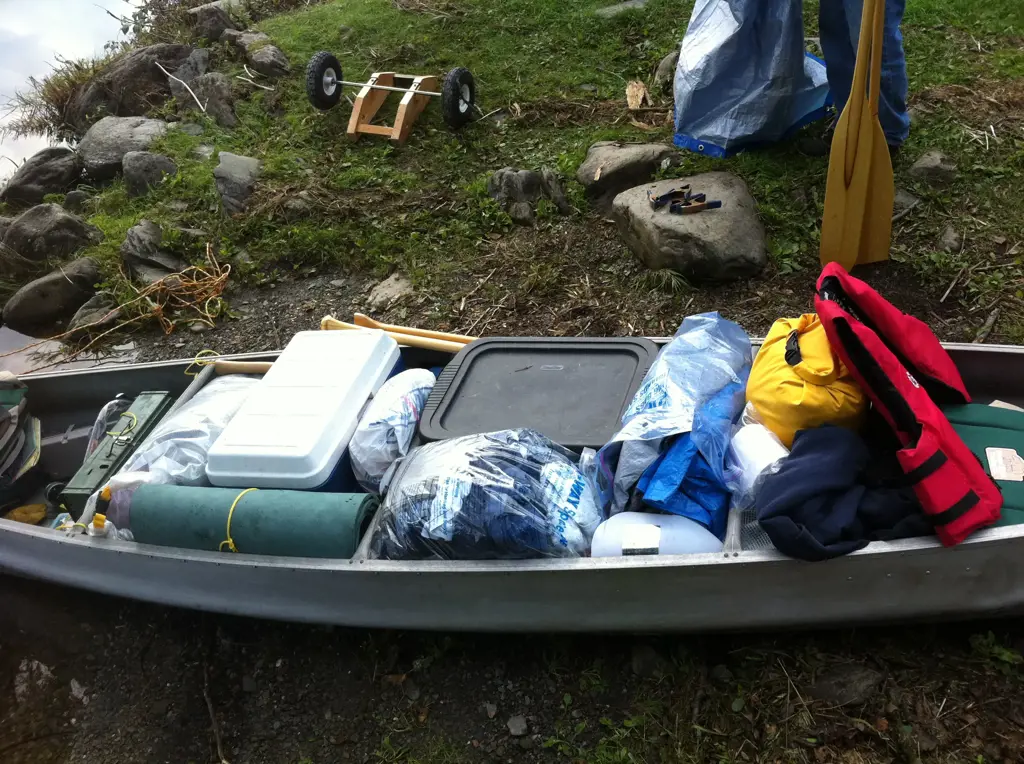
When planning a three-day canoe trip, it is essential to pack enough food and water to sustain yourself and stay hydrated during your journey. The amount of food and water you will need depends on several factors, including your activity level, body size, and environmental conditions. In this article, we will discuss some guidelines to help you determine how much food and water to pack for a three-day canoe trip.
Water is the most critical resource you will need during your trip. The general rule of thumb is to drink at least half a gallon, or two liters, of water per day. However, this amount can vary based on factors such as temperature, humidity, and your activity level. If you are paddling in hot weather or exerting yourself heavily, you may need to increase your water intake. It is always a good idea to carry a water filter or water purification tablets to ensure a safe water source along the way.
In terms of food, you should aim for a balanced diet that provides you with enough energy and nutrients to fuel your paddling adventure. A common recommendation is to consume around 2,500 to 3,000 calories per day, but this may vary depending on your individual needs. It is important to choose lightweight, non-perishable foods that are easy to pack and prepare.
Here is a breakdown of the different food groups you should consider when planning your meals:
- Carbohydrates: Carbohydrates are an excellent source of energy and should make up a significant portion of your meals. Pack foods such as pasta, rice, bread, and energy bars to provide you with the fuel you need for paddling.
- Proteins: Proteins are essential for repairing and building muscle tissues. Consider packing dehydrated meats, canned fish, or protein bars to meet your protein requirements during the trip.
- Fruits and Vegetables: To ensure you get enough vitamins and minerals, include dried fruits, nuts, and dehydrated vegetables in your meal plan. These items are lightweight and provide essential nutrients.
- Snacks: Pack snacks such as trail mix, granola bars, and jerky to keep you energized throughout the day. These items are easy to eat on the go and provide a quick boost of energy.
When it comes to the quantity of food, a general rule is to pack enough for three meals per day, including snacks. Additionally, it is a good idea to pack a little extra in case of unexpected delays or hunger spikes. Remember to keep your food packed securely to protect it from wildlife and to minimize waste.
Planning your meals ahead of time and creating a detailed food inventory can help you ensure you have enough food for the duration of your trip. It is also helpful to consider the weight and space limitations of your canoe when selecting foods to pack.
In conclusion, packing enough food and water for a three-day canoe trip is crucial for your health and enjoyment. By considering factors such as water intake, calorie needs, and food groups, you can plan your meals effectively and ensure you have the necessary resources to sustain yourself during your journey. Happy paddling!
Essential Packing Tips for a December Trip to New York City
You may want to see also

What type of clothing and gear is necessary for a three day canoe trip?
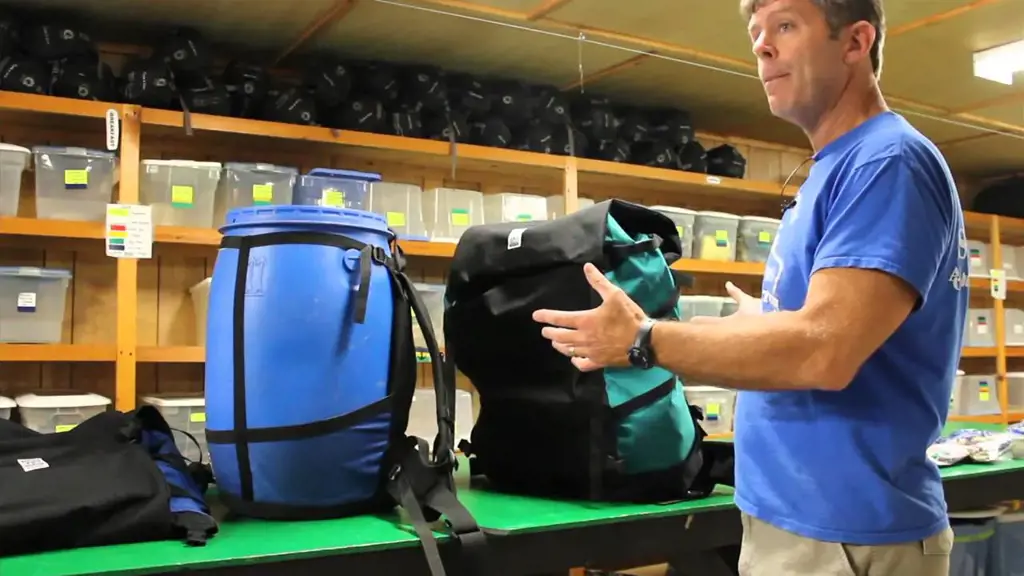
A three day canoe trip can be an exciting adventure, but it's important to come prepared with the right clothing and gear to ensure a safe and enjoyable experience. In this article, we will discuss the necessary items for a three day canoe trip, including clothing, equipment, and other essential gear.
Clothing:
- Layering: It's important to dress in layers to accommodate changing weather conditions. Start with a moisture-wicking base layer, such as synthetic or merino wool, to keep you dry and comfortable. Add a warm mid-layer, such as a fleece or down jacket, and a waterproof and breathable outer layer to protect against rain and wind.
- Quick-drying clothing: Opt for quick-drying materials like nylon or polyester for your pants, shorts, and shirts. These materials are lightweight and dry quickly, which is essential for staying comfortable on the water.
- Hat and sunglasses: A wide-brimmed hat will protect you from the sun's harmful UV rays, while sunglasses will shield your eyes from glare and prevent water splashes from obstructing your vision.
- Footwear: Choose footwear that will provide good traction on wet surfaces and protect your feet from sharp rocks or debris. Water shoes or neoprene booties are great options, as they dry quickly and provide excellent grip.
Gear:
- Canoe and Paddles: A sturdy and reliable canoe is the most crucial piece of equipment for a canoe trip. Ensure that it is in good condition and has enough space for your gear. Additionally, you'll need a set of paddles that are comfortable and suited for your canoeing style.
- Life jackets: Safety should be a top priority, so it is vital to wear a properly fitting personal flotation device (PFD) or life jacket at all times while on the water. Look for a PFD with a high buoyancy rating and adjustable straps to ensure a secure fit.
- Dry bags: Waterproof dry bags are essential for keeping your belongings dry and organized during the trip. Pack your clothing, food, electronics, and other essentials in different-sized dry bags to protect them from water damage.
- Camping gear: Depending on the duration of your trip, you may need a tent, a sleeping bag, and a camping stove. Choose lightweight and compact options that are suitable for your specific needs.
- Navigation tools: Bring a map and compass to help you navigate the waterways. GPS devices and waterproof phone covers can also be handy, but it is essential to have a manual backup in case of technical difficulties.
- Food and water: Plan and pack enough food and water for the duration of your trip. Opt for lightweight and non-perishable options that can be easily prepared. Don't forget to bring a water filter or purification tablets to ensure access to clean drinking water.
Examples:
Sarah is preparing for a three day canoe trip in a national park. She plans on canoeing on various lakes and rivers, exploring the beautiful wilderness around her. To stay comfortable and safe on her trip, she packs a set of quick-drying clothing, including moisture-wicking base layers, a warm mid-layer, and a waterproof outer layer. She also brings a wide-brimmed hat, polarized sunglasses, and water shoes to protect herself from the elements.
In terms of gear, Sarah ensures that her canoe is in good condition and brings a set of comfortable paddles. Safety is a priority for her, so she wears a properly fitting life jacket at all times. Sarah packs her clothing and other belongings in waterproof dry bags to keep them dry and organized throughout the trip. She also brings a lightweight tent, a sleeping bag, and a portable stove for camping.
Furthermore, Sarah brings a map, compass, and a waterproof phone cover for navigation. She packs enough food and water for the duration of her trip, including lightweight and non-perishable options. Finally, she includes a water filter to ensure access to clean drinking water during her journey.
By following this comprehensive list of necessary clothing and gear, Sarah is well-prepared for her three day canoe trip. She can now focus on enjoying the stunning natural beauty and tranquility of the wilderness while staying safe and comfortable throughout her adventure.
Essential Items to Pack for a Bikini Competition Success
You may want to see also

Are there any special safety equipment or tools that should be packed for a three day canoe trip?
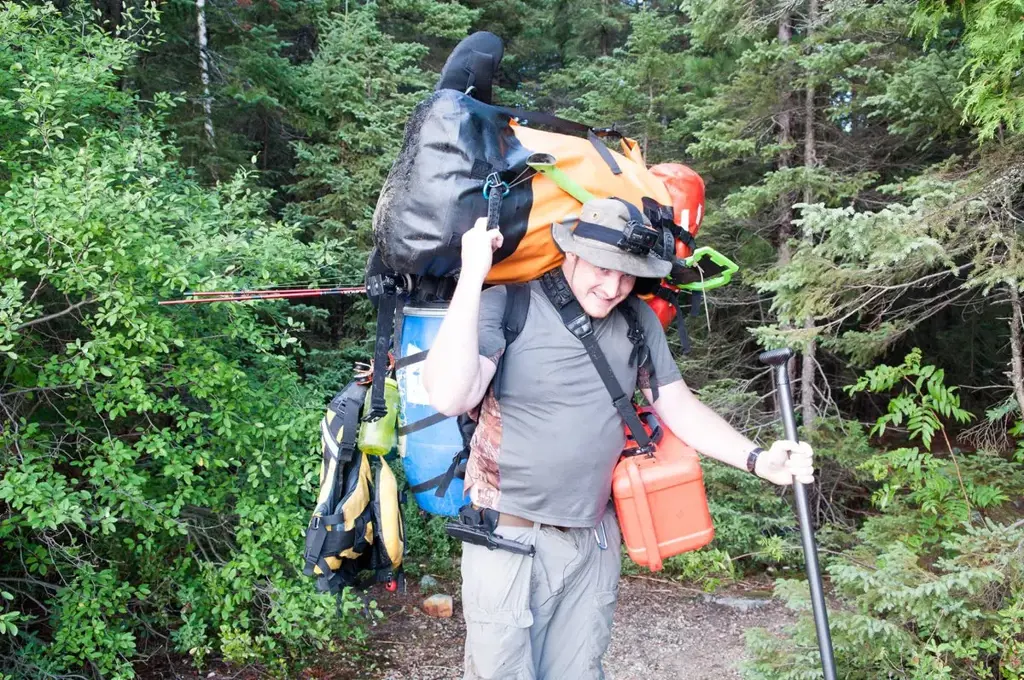
When preparing for a three day canoe trip, it is essential to pack the necessary safety equipment and tools to ensure a safe and enjoyable experience on the water. Canoeing can be a thrilling and rewarding activity, but like any outdoor adventure, it comes with its own set of risks. By being prepared and having the right equipment at hand, you can minimize those risks and have a successful trip. Here is a list of special safety equipment and tools that should be packed for a three day canoe trip:
- Personal flotation devices (PFDs): PFDs, also known as life jackets, are essential for every person on board the canoe. They provide buoyancy and keep you afloat in case of an accident or capsize. Make sure to pack PFDs that are appropriate for everyone's size and weight and that are approved by the relevant authorities.
- Canoe repair kit: A canoe repair kit should be included in your packing list in case the canoe gets damaged during the trip. It should include items such as duct tape, epoxy, patches, and a repair manual. These tools will allow you to fix any minor damages that may occur, ensuring that your canoe remains seaworthy throughout the trip.
- First aid kit: Accidents can happen anywhere, and being prepared with a first aid kit is crucial. Make sure to pack a well-stocked kit that includes bandages, adhesive tape, antiseptic wipes, pain relievers, insect repellent, and any necessary prescription medications.
- Navigation tools: When canoeing, it is essential to have the right tools to navigate and plan your route. A topographic map, compass, and a GPS device can help you stay on track and avoid getting lost. Familiarize yourself with these tools before the trip to ensure you know how to use them effectively.
- Communication devices: It is important to have a means of communication in case of emergencies or to stay in touch with the outside world. A fully charged cell phone, a whistle, and a waterproof VHF radio are excellent options to have in case of an emergency.
- Safety whistle: A safety whistle is a small, lightweight device that can be easily attached to your PFD. It can be used to attract attention if you find yourself in a dangerous situation or need assistance. The shrill sound can carry long distances and is an important tool for communication on the water.
- Extra clothing and rain gear: Weather conditions can change rapidly, especially on the water. It is important to pack extra clothing and rain gear to protect against hypothermia and to stay dry. Synthetic or wool materials are preferable to cotton, as they provide better insulation even when wet.
- Water and food supply: Staying hydrated and well-fed during your canoe trip is essential for maintaining energy and preventing exhaustion. Pack enough water and non-perishable food items to last the duration of your trip. Consider foods that are easy to prepare and have a high caloric content to provide the necessary energy.
- Sun protection: Spending extended periods of time on the water exposes you to the sun's harmful rays. To protect yourself from sunburn and other sun-related issues, pack sunscreen with a high SPF, sunglasses with UV protection, and a wide-brimmed hat to shield your face.
- Emergency shelter: In case of an unexpected overnight stay, it is important to have a shelter to protect you from the elements. A lightweight tarp or a small tent can be packed as an emergency shelter option.
By packing these special safety equipment and tools, you are taking proactive steps to ensure your safety and well-being during a three day canoe trip. While accidents and emergencies can still occur, being prepared and having the necessary tools can make a significant difference in your ability to handle such situations effectively. Remember to familiarize yourself with the equipment and practice using them before your trip, so you can respond confidently in case of an emergency. Happy canoeing!
Essential Items to Pack for an October Trip to Egypt
You may want to see also

Are there any additional recreational items or entertainment options that are recommended to pack for a three day canoe trip?
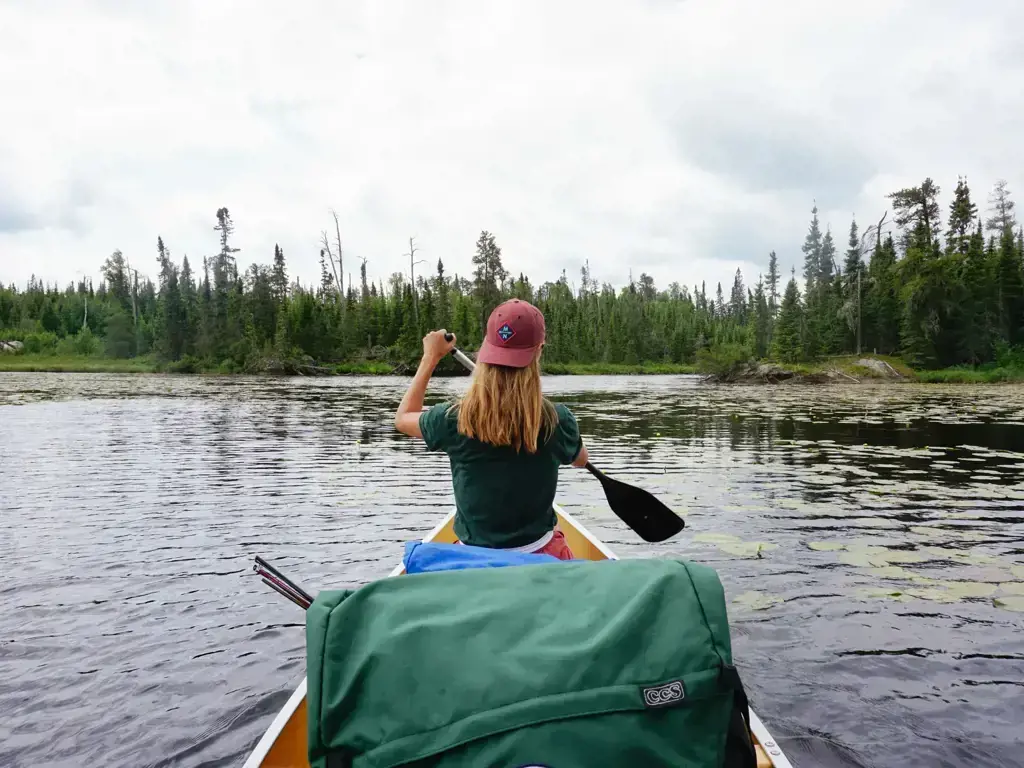
Planning a three-day canoe trip can be an exciting adventure. Along with packing the essential gear, it's also important to consider additional recreational items and entertainment options to make the trip more enjoyable. Bringing along some extra items can enhance the overall experience and provide entertainment during downtime. Here are some recommendations for items that can be packed for a three-day canoe trip:
Fishing Gear:
If you enjoy fishing, bringing along some fishing gear can add a new dimension to your canoe trip. Make sure to pack a fishing rod, tackle box, and any necessary fishing accessories. Research the local fishing regulations and ensure you have the appropriate fishing license if required.
Binoculars:
Binoculars can be useful for observing wildlife and enjoying the scenic views along the river or lake. They can also be handy for identifying different bird species or getting a closer look at landmarks in the distance.
Waterproof Playing Cards:
Bringing a deck of waterproof playing cards is a great way to pass the time during evenings at the campsite. Whether it's a game of poker or solitaire, playing cards can provide entertainment for both individuals and groups.
Books or E-Readers:
If you enjoy reading, pack a book or an e-reader to keep yourself entertained during quiet moments. Choose books that are lightweight and easy to carry. E-readers are a convenient option as they can store multiple books in one device.
Musical Instruments:
If you have a knack for playing musical instruments, bringing along a portable option like a harmonica or ukulele can add an extra dimension of fun to the trip. Sitting around the campfire and playing music can create a memorable experience for everyone.
Outdoor Games:
Pack small, lightweight outdoor games that can be played at the campsite or during breaks along the journey. Games like frisbee, bocce ball, or cornhole can provide entertainment and keep everyone active and engaged.
Photography Equipment:
If you enjoy photography, bring along a camera to capture the stunning landscapes, wildlife, and memories of your canoe trip. Make sure to pack extra batteries and memory cards to ensure you never miss a shot.
Nature Field Guides:
Consider bringing a field guide or two to help identify different plants, trees, birds, and wildlife you encounter along the way. It can be a great learning experience and add to the appreciation of the natural surroundings.
Remember, when packing additional recreational items and entertainment options, it's important to consider weight and space limitations. Canoe trips often involve limited storage, so prioritize lightweight and compact items that can still provide maximum enjoyment. Always prioritize the essential gear first, such as safety equipment, food, and water, before packing any recreational or entertainment items.
In conclusion, packing some additional recreational items and entertainment options can greatly enhance a three-day canoe trip. Whether it's fishing gear, binoculars, playing cards, books, musical instruments, outdoor games, photography equipment, or nature field guides, these items can provide entertainment and enrich the overall experience. Just be mindful of weight and space limitations and ensure that the essential gear is not compromised by the additional items.
Essential Items to Pack for Flying with an Infant
You may want to see also
Frequently asked questions
It is recommended to pack lightweight, quick-drying clothing that is suitable for various weather conditions. This can include a combination of moisture-wicking t-shirts, long-sleeve shirts, shorts, pants, underwear, and socks. It's also important to bring a waterproof jacket and pants in case of rain.
It is best to pack sturdy, quick-drying footwear that can provide good traction and protection. Water shoes, sandals, or lightweight hiking boots are popular choices. It's important to avoid wearing heavy boots that can become waterlogged and cause discomfort.
In addition to clothing and footwear, it's important to bring personal items such as a hat or cap for sun protection, sunglasses, sunscreen, insect repellent, a first aid kit, toiletries, a towel, and a personal water bottle. It's also helpful to bring a small camping knife, flashlight or headlamp, and a camera or phone for capturing memories.
For camping during a canoe trip, it's essential to have a lightweight, waterproof tent, a sleeping bag suitable for the weather conditions, and a sleeping pad or mat for added comfort. Other necessary camping gear includes a camping stove and fuel, cookware, eating utensils, a water filter or purification tablets, and a dry bag or waterproof container for storing food and other essentials.
It's always a good idea to pack a map and compass, as well as a whistle or signaling device for emergencies. The trip itinerary, permits, and any necessary identification documents should also be included. It's also important to pack enough food for the duration of the trip, taking into account any dietary restrictions or preferences. Lastly, consider packing lightweight camping chairs for added comfort and relaxation during downtime at the campsite.





